How Does Your Driving Accuracy Compare To The PGA Tour Average? (Plus 5 Tips To Help Close The Gap)
Driving accuracy is a key measure for success on the PGA Tour... and it's no different at the amateur level. These five tips can help you find more fairways
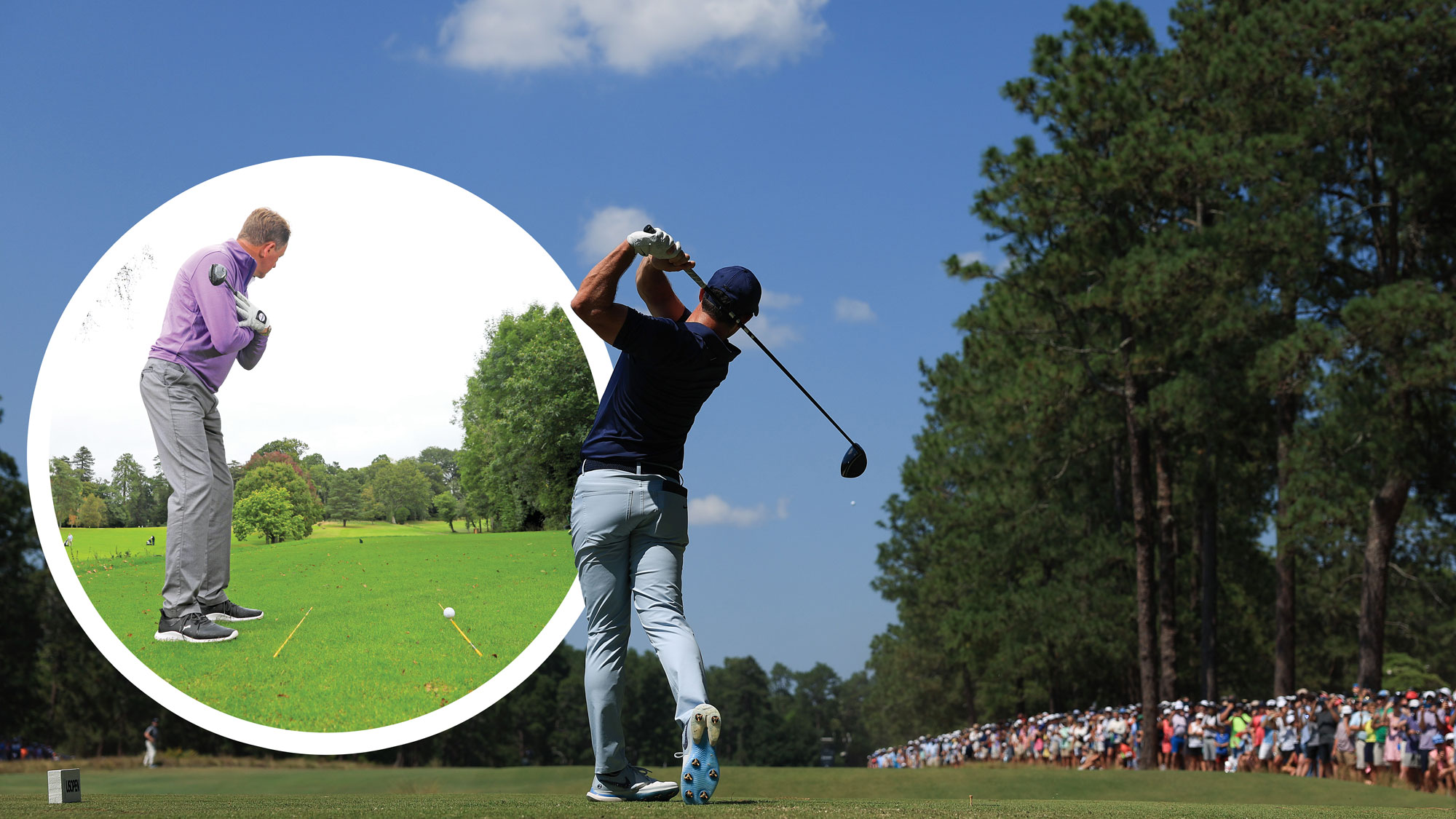
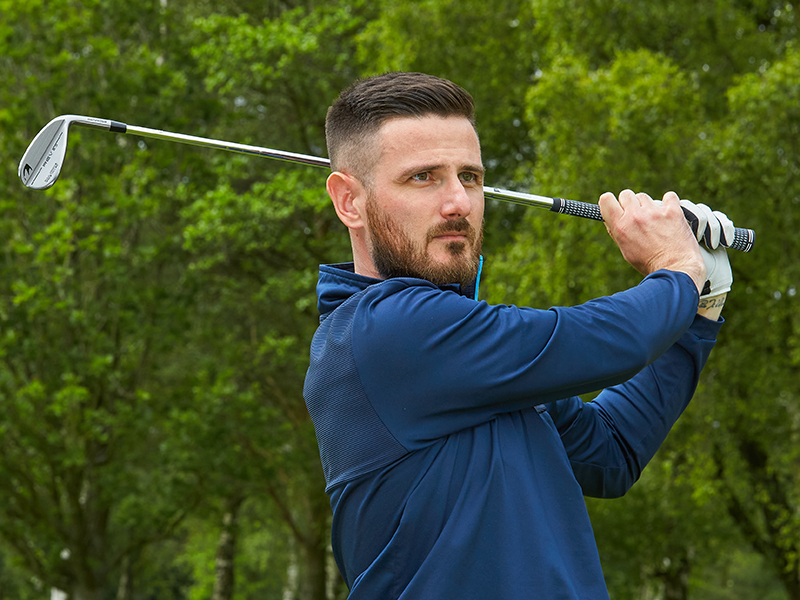
On the PGA Tour, driving accuracy is calculated using the number of fairways hit in relation to the possible number of fairways (excluding par-3 holes). Aaron Rai currently leads the way with a whopping 72% of fairways hit, but the average for 2024 currently stands at 60%.
If we say for argument sake that there are 14 holes in total on a particular golf course that are either par-4 or par-5, that means that an average PGA Tour player finds around 8 fairways per round. World No.1 Scottie Scheffler only slightly exceeds that average (66%), but how do you compare?
The calculation is simple, meaning all amateur golfers can track their own data as they play. In all likelihood, your figures are going to be much lower than those stated above, but once you have identified your number, the next step is to know what to do with that information.
So, in the spirit of helping you to improve your driving accuracy, we asked Golf Monthly Top 50 Coach Keith Wood for his top five tips to hit more fairways...
Driving Accuracy: 5 Tips To Hit More Fairways
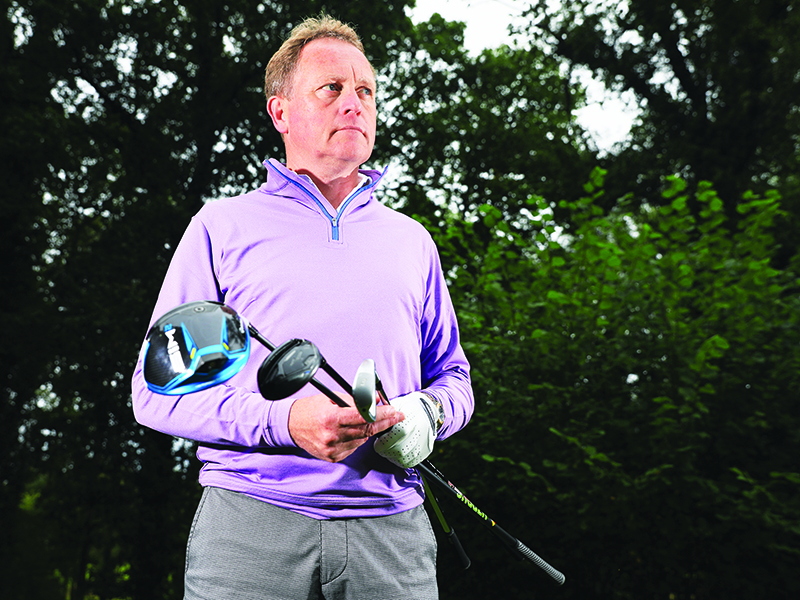
Keith has worked with Golf Monthly for over 20 years and has coached multiple Tour winners, including Sir Nick Faldo and Seve Ballesteros. As an experienced professional, and one of our Top 50 Coaches, he is a trusted voice on all things relating to the golf swing.
1. Pick A Comfortable Club
First, get a clear idea of what you want to do on a hole. The hole in the image below has ditches and trees both right and left before turning right and up to the green. It’s not long – about 320 yards – so some golfers may not need their longest club to hit it far enough to make the corner and see the green.
But on every hole, you should be leaning towards your most comfortable club anyway – the one with which you are most confident of finding the fairway – because golf is much simpler from the short grass, even if you can’t then reach the green in regulation. This is where your handicap comes in!
Make sure you know what a hole does via a yardage chart or app or by lasering the distances to key points. On this hole, you perhaps ideally want to find the fairway at around 200 yards, so pick your most comfortable club to achieve that goal. For some, it may be a long-iron, hybrid or 5-wood, while for others it may be a 3-wood or driver. It’s different for everyone, but always choose the club you’re most comfortable with to help you find the target, especially when it’s a real must-hit fairway.
Get the Golf Monthly Newsletter
Subscribe to the Golf Monthly newsletter to stay up to date with all the latest tour news, equipment news, reviews, head-to-heads and buyer’s guides from our team of experienced experts.
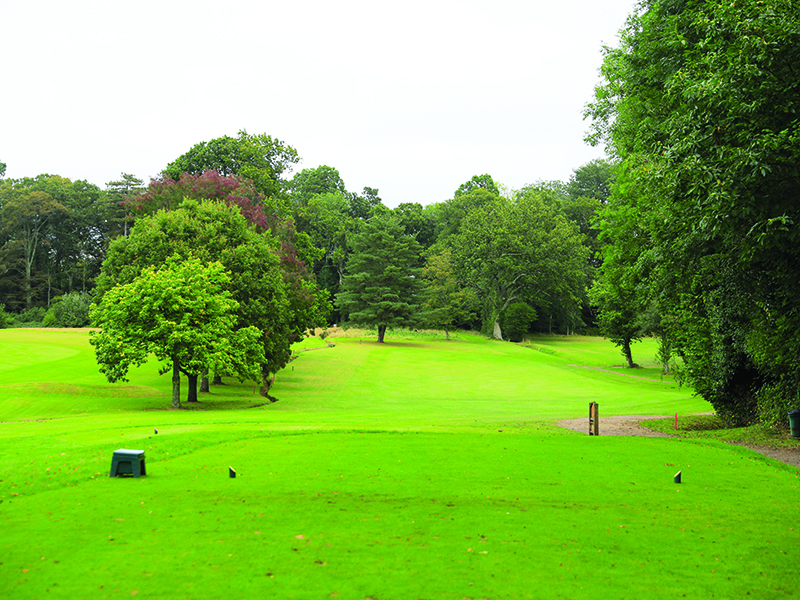
Pick the right club for the hole you are about to play
2. Go With Your Comfortable Shape
Part of your club-decision process revolves around your comfortable shot shape, too. In the example outlined in the image below, if you’re a fader, you can aim at the left edge of the tree at the far end of the fairway and let it drift right. But the most important thing is to guarantee that fade, so focus any swing thoughts on ensuring that happens.
These might be to make sure you hold the face off a little bit more, or rotate aggressively through the ball so the club can’t pass you and close the face. If your shape is the other way, those thoughts might be making sure you don’t get ahead of the ball. Either way, I would advise against trying to hit a shape that doesn’t come naturally. Things often go wrong when you try to manufacture a shape that’s just not comfortable.
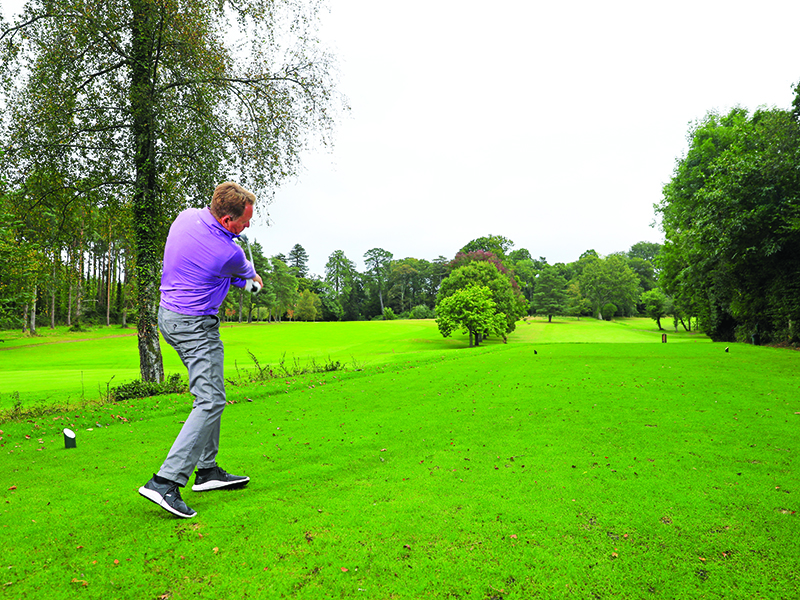
Pick a start line the suits your comfortable shot shape
3. Put Yourself At Ease
Think about where to tee it up to put yourself most at ease. In the example below, I don’t think you’d tee up on the right even if you are a fader, as the overhanging trees are a distraction visually and could also come into play if you start the ball further right than intended.
Teeing off further left not only eliminates that particular risk, but also eases the visual pressure because you can now see more of the fairway around the corner, too. Tee it up where it creates the least anxiety for you. You have to hit this fairway, so the last thing you want to do is tee it up on the right where all you can see are trees, ditches and narrowness!
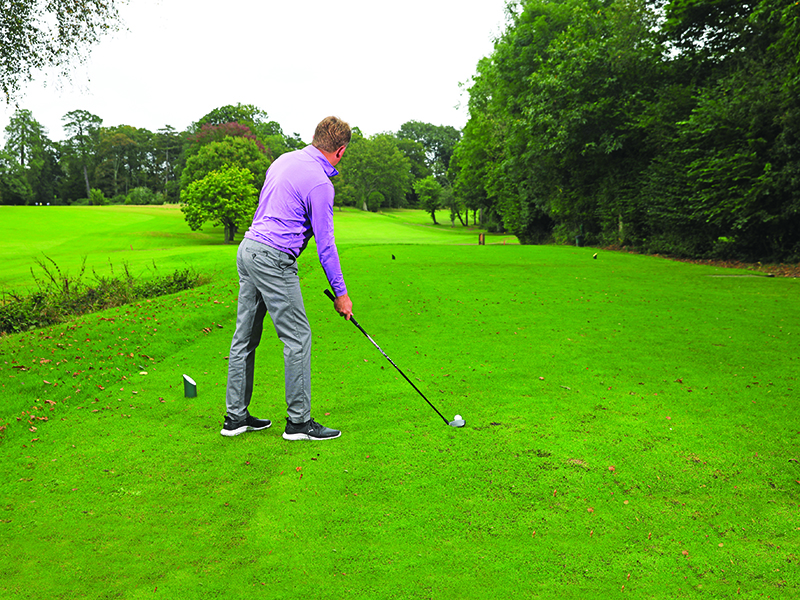
Use all the space available between the tee markers to find the right spot for your next shot
4. Think Alignment
Alignment is key, so good discipline at set-up is very important. Shoulders, hips, knees and feet must all be set parallel to your chosen target line. Clearly, in a competition you can’t lay down alignment sticks, as i've done below, but your chances of hitting the fairway will increase significantly if you’re correctly aligned, so it’s worth taking time to ensure you really are aiming where you want to hit it.
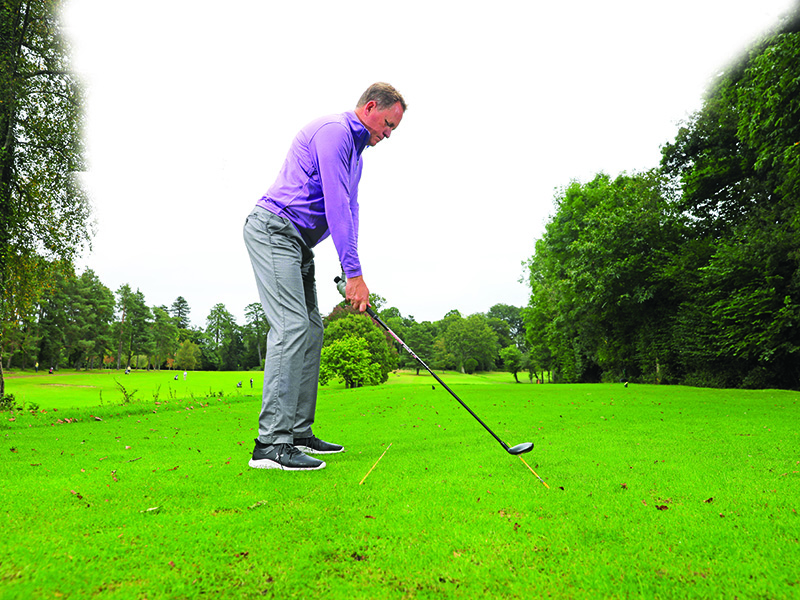
While you can't replicate this alignment drill on the course, be sure to focus on your aim as it is a fundamental aspect of the golf swing
5. Commit Fully
Finally, the danger can be that you become too ‘steery’ when your focus is on hitting the fairway, as everything gets a bit tight and anxious and the swing can easily become too short both back and through. What you actually want is a syrupy, full-to-full swing, so once you’ve taken all the above steps, commit fully and swing with confidence.
Who Is The Most Accurate Driver Of All Time?
According to Data Golf, using their all-time filter to rank players from across the decades in order of their driving accuracy, the number one position is currently held by Fred Funk.
The eight-time PGA Tour winner currently outranks the likes of Jim Furyk (second), Chez Reavie (third) and current World No.4 Collin Morikawa (fourth) on a list boasting seven Americans in the top-10 rankings. While Funk wasn't the longest off the tee, he certainly made up for it with his ability to find fairways and keep his ball in-play.

Barry joined Golf Monthly in January 2024, and now leads the instruction section across all platforms including print and digital. Working closely with Golf Monthly's Top 50 Coaches, he aims to curate and share useful tips on every aspect of the game - helping amateurs of all abilities to play better golf. A member at Sand Moor Golf Club in Leeds, he looks forward to getting out on the course at least once a week in the pursuit of a respectable handicap.
Barry is currently playing:
Driver: Benross Delta XT Driver
Hybrid: TaylorMade Stealth 4 Hybrid
Irons: Benross Delta XT 5-PW
Wedges: TaylorMade RAC 60, Callaway Jaws MD5 54
Putter: TaylorMade Spider Tour
-
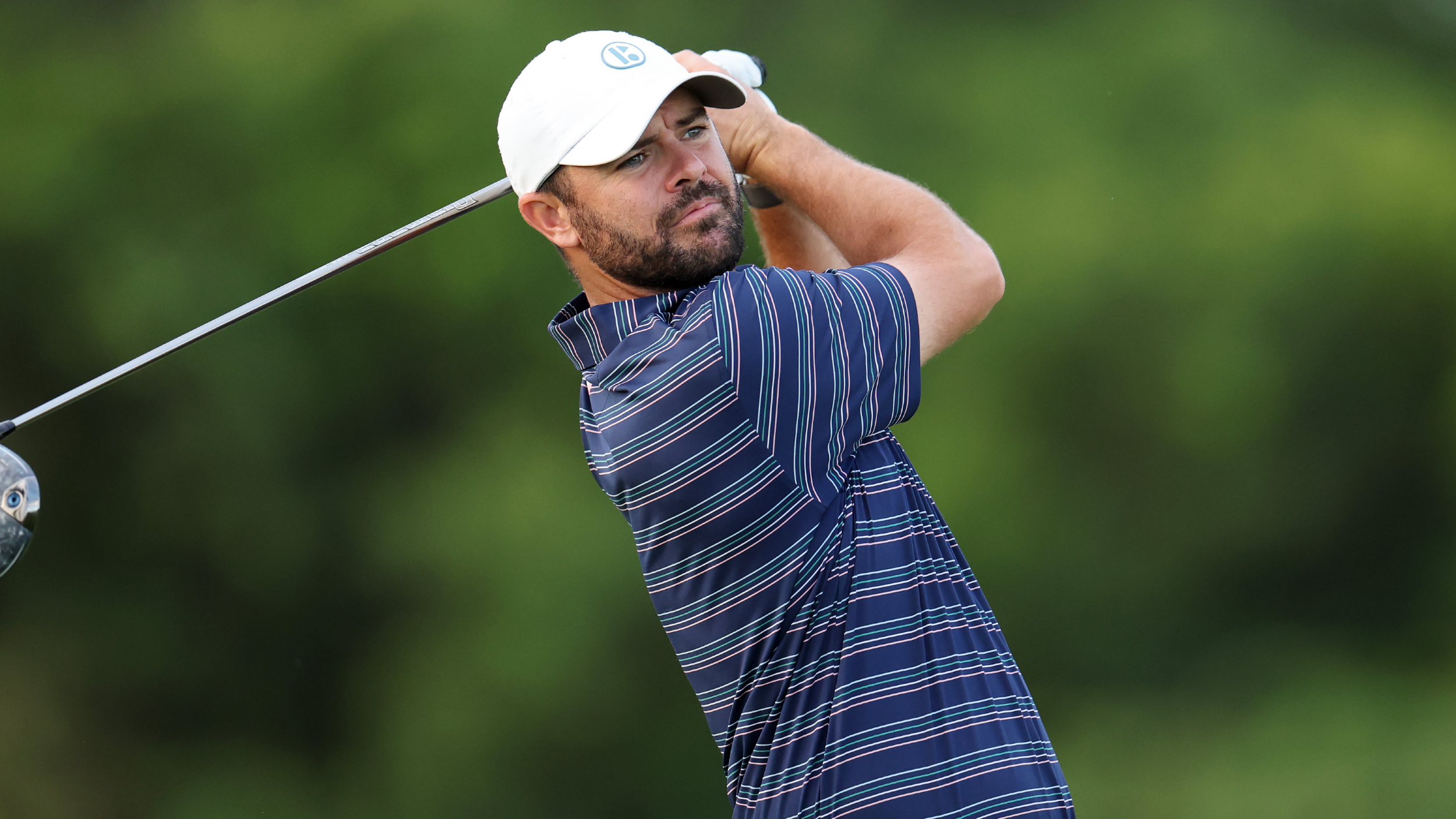 Wesley Bryan Confirms He Will Appeal ‘Indefinite’ PGA Tour Suspension
Wesley Bryan Confirms He Will Appeal ‘Indefinite’ PGA Tour SuspensionThe YouTube content creator has confirmed he will be appealing the PGA Tour’s decision to suspend him for taking part in the LIV Golf: The Duels match
By Mike Hall
-
 Justin Thomas Confirms Stand-In Caddie Will Not Replace Long-Term Looper After First Victory Since 2022
Justin Thomas Confirms Stand-In Caddie Will Not Replace Long-Term Looper After First Victory Since 2022Thomas won the RBC Heritage with Max Homa's former looper, Joe Greiner as his assistant but is looking forward to welcoming his regular caddie back soon
By Jonny Leighfield
-
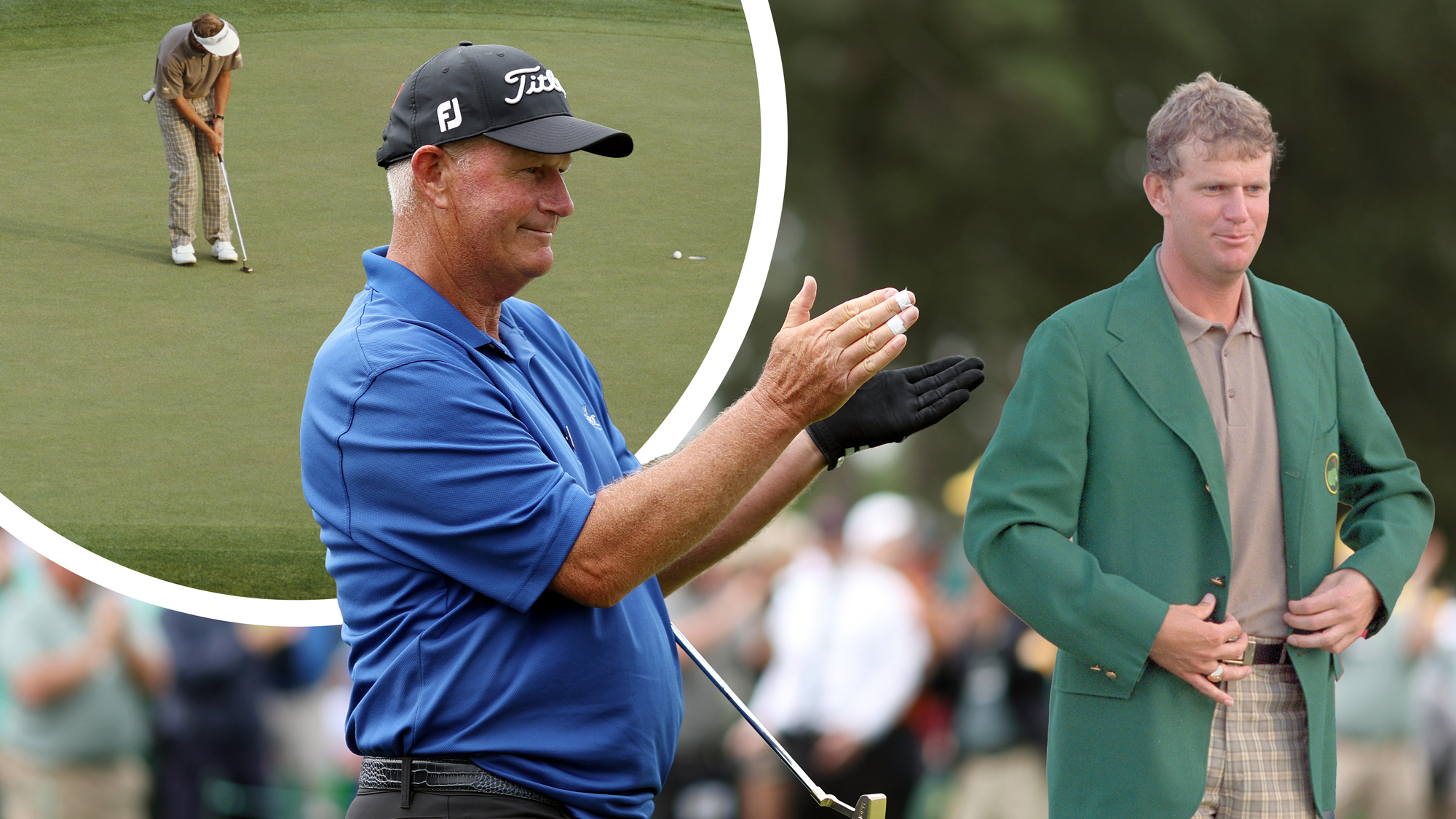 Sandy Lyle Shared 3 Top Tips With Us Prior To Winning The Masters in 1988... And They Could Still Save You Shots 37 Years Later
Sandy Lyle Shared 3 Top Tips With Us Prior To Winning The Masters in 1988... And They Could Still Save You Shots 37 Years LaterThe 1988 Masters Champion shared his expert tips in the January 1988 issue of Golf Monthly, but they are still absolute gems for amateur golfers to this day...
By Barry Plummer
-
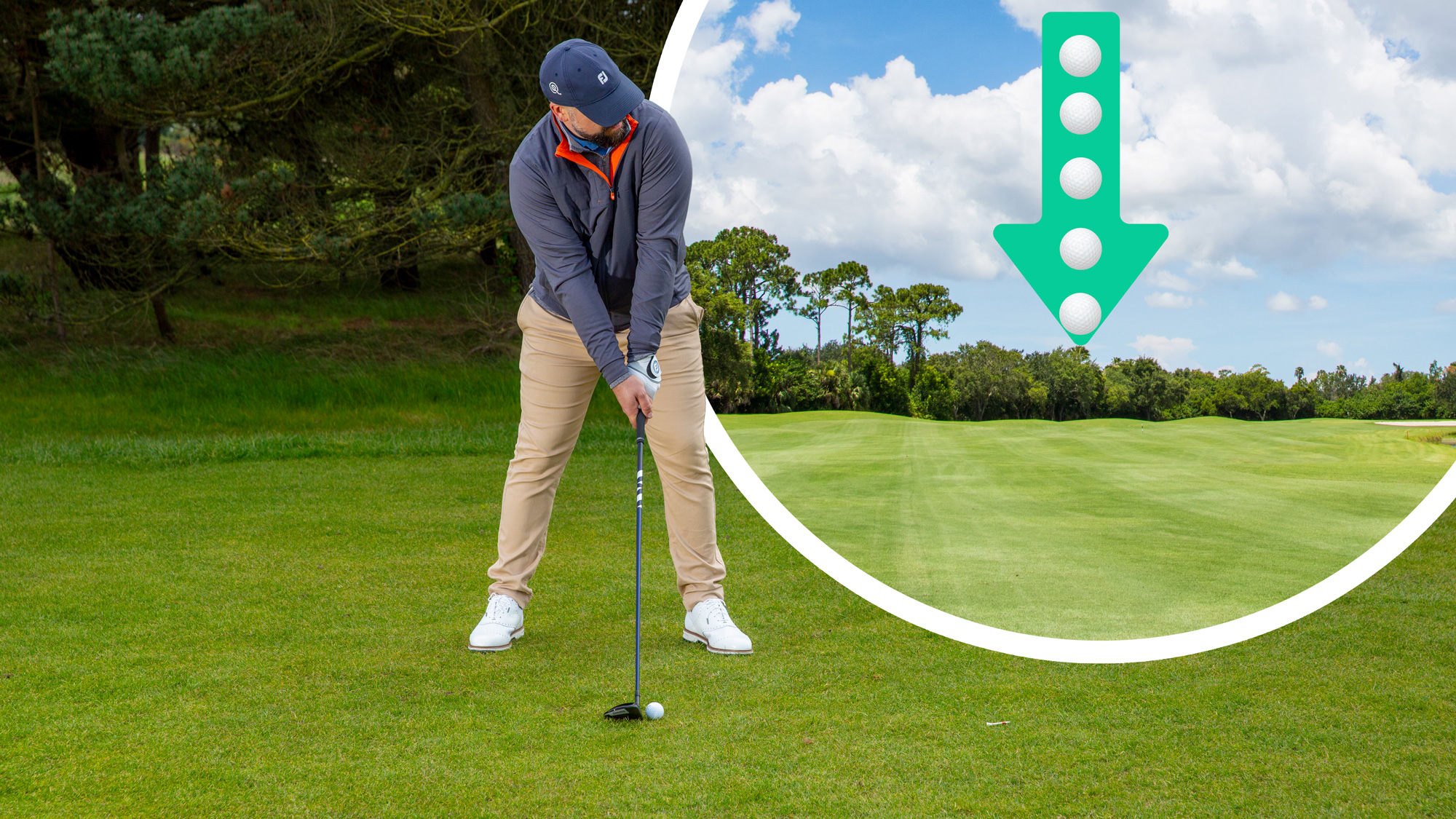 Are You More Accurate Than The Average Amateur Golfer? Peter Finch Can Help You Hit More Fairways In 2025
Are You More Accurate Than The Average Amateur Golfer? Peter Finch Can Help You Hit More Fairways In 2025There is no better feeling than striping one down the middle of the fairway, but many amateurs struggle with accuracy. Peter Finch has four pro tips to help...
By Barry Plummer
-
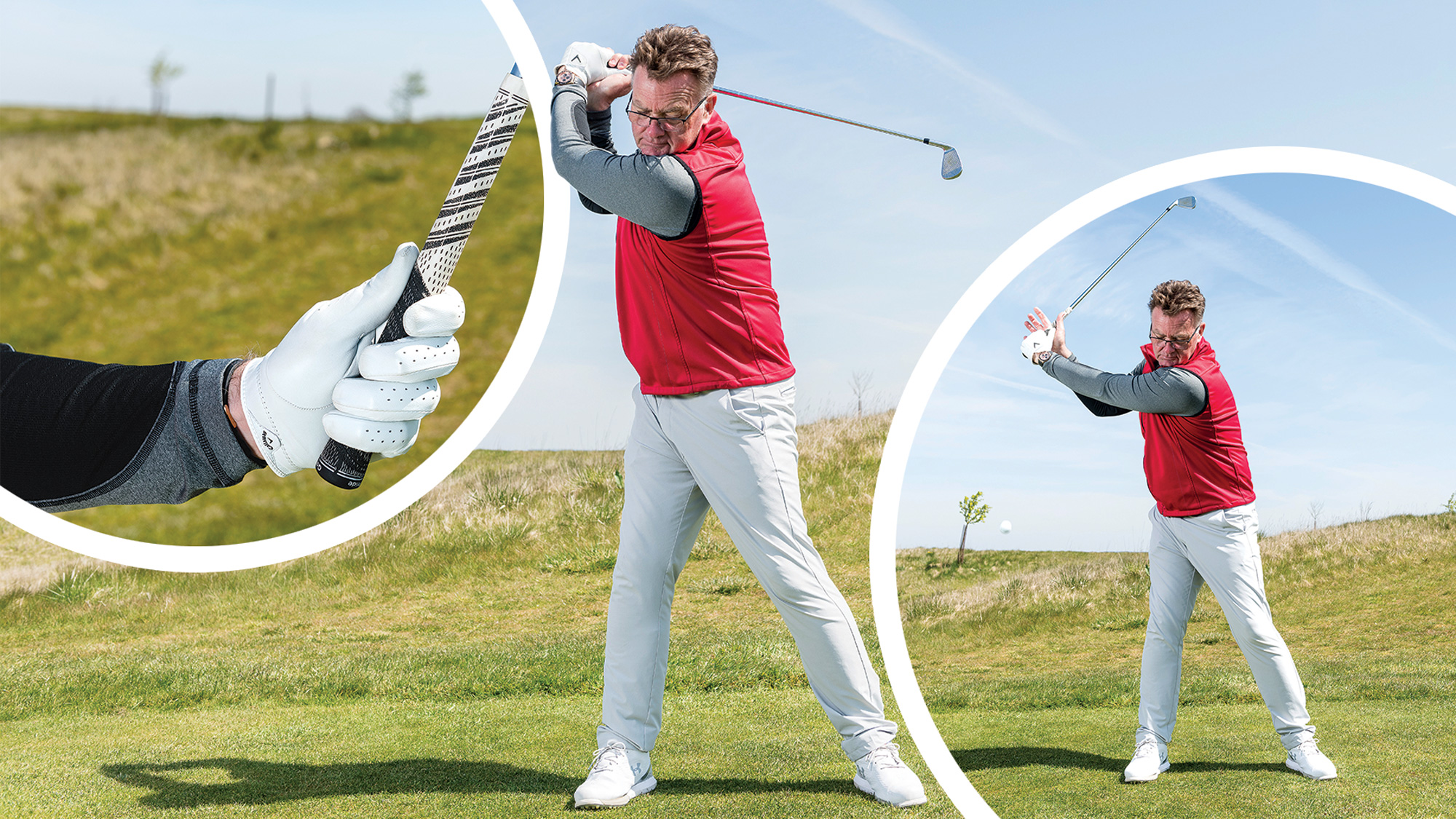 Are You A Victim Of This Destructive Golf Swing Fault? Let Me Help You Fix It Before You Tee It Up This Weekend
Are You A Victim Of This Destructive Golf Swing Fault? Let Me Help You Fix It Before You Tee It Up This WeekendAn overswing in golf is a destructive habit which can cost us precious shots on the golf course, but PGA Pro John Jacobs has a quick fix to get us game ready...
By Barry Plummer
-
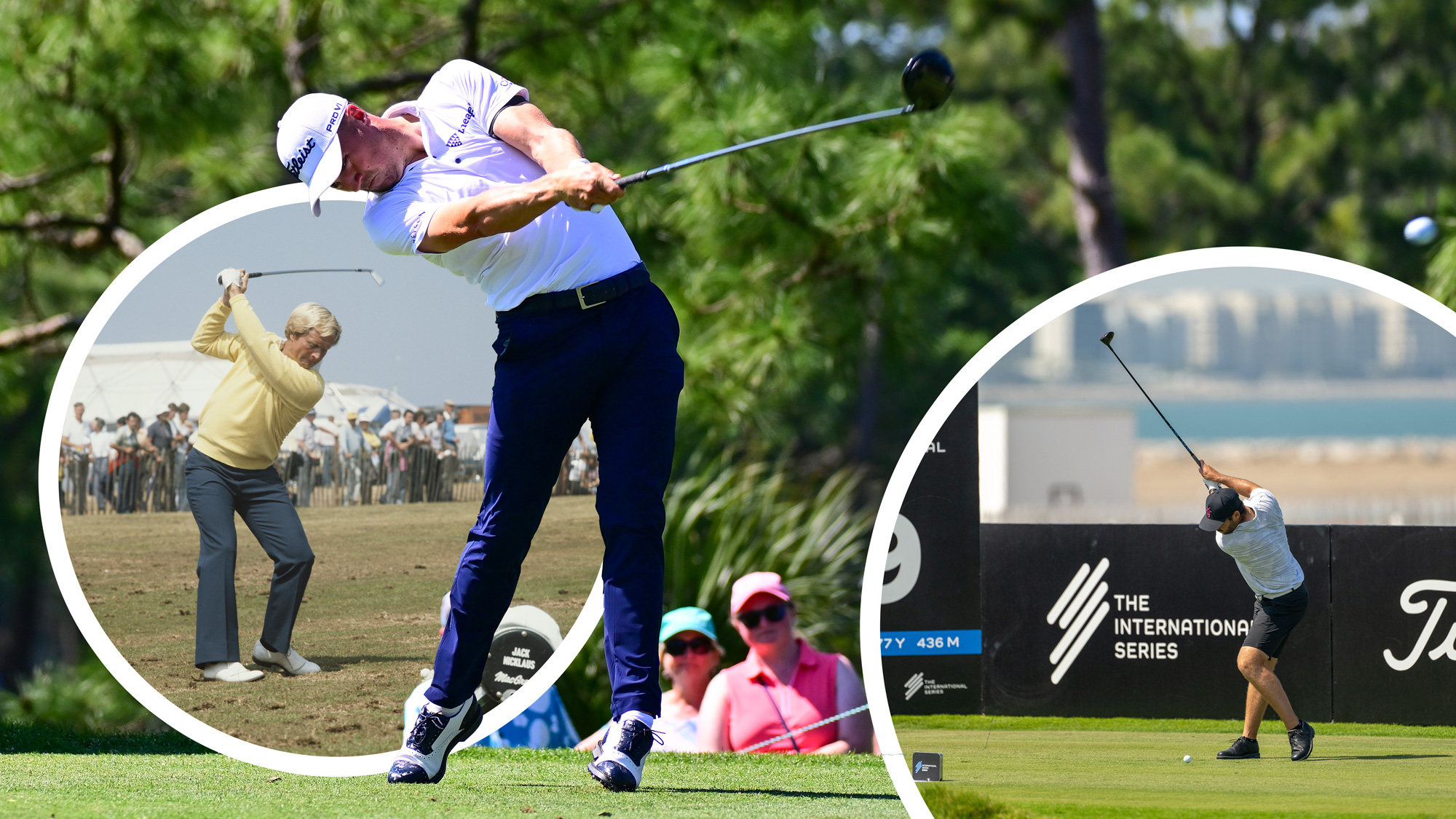 Do You Struggle With Distance Off The Tee? Try This Quick Fix To Make 2025 Your Biggest Golf Season Yet
Do You Struggle With Distance Off The Tee? Try This Quick Fix To Make 2025 Your Biggest Golf Season YetStruggling with distance off the tee could be a major reason why your handicap isn't coming down or your scores aren't improving, but our quick fix can help...
By Barry Plummer
-
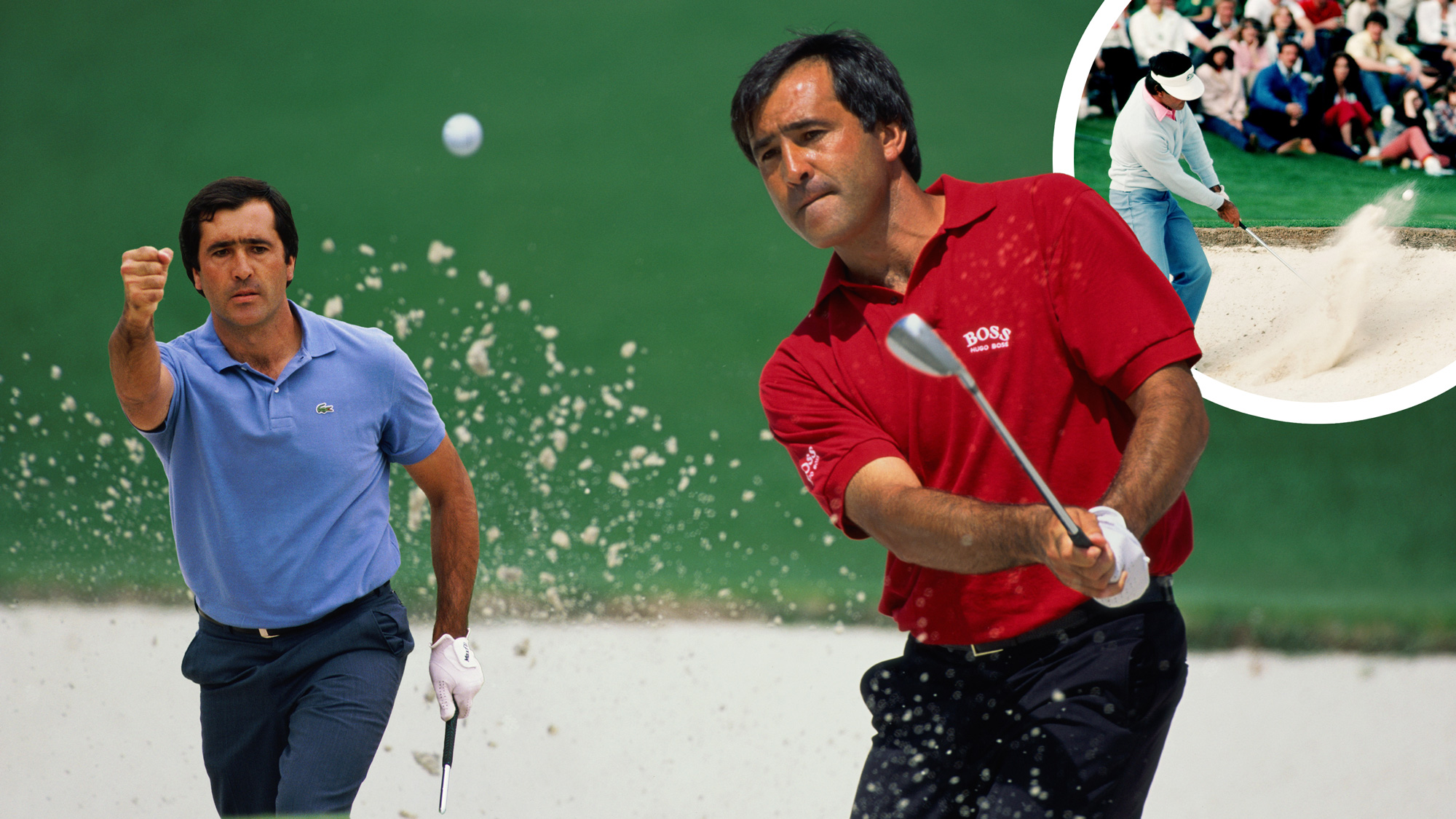 Seve's 'Lost' Bunker Lesson: Master Slopes And Transform Your Short Game Today
Seve's 'Lost' Bunker Lesson: Master Slopes And Transform Your Short Game TodaySeve's forgotten bunker lesson, from Golf Monthly's August 1983 issue, could hold the secret to better bunker play and supercharging your short game this season
By Barry Plummer
-
 Is Your Golf Swing Failing You? This All-Encompassing Drill Can Instantly Save It
Is Your Golf Swing Failing You? This All-Encompassing Drill Can Instantly Save ItAre you struggling with your golf swing? Discover the all-encompassing drill that can fix common swing faults and restore your game. Get back on track today!
By Tom Motley
-
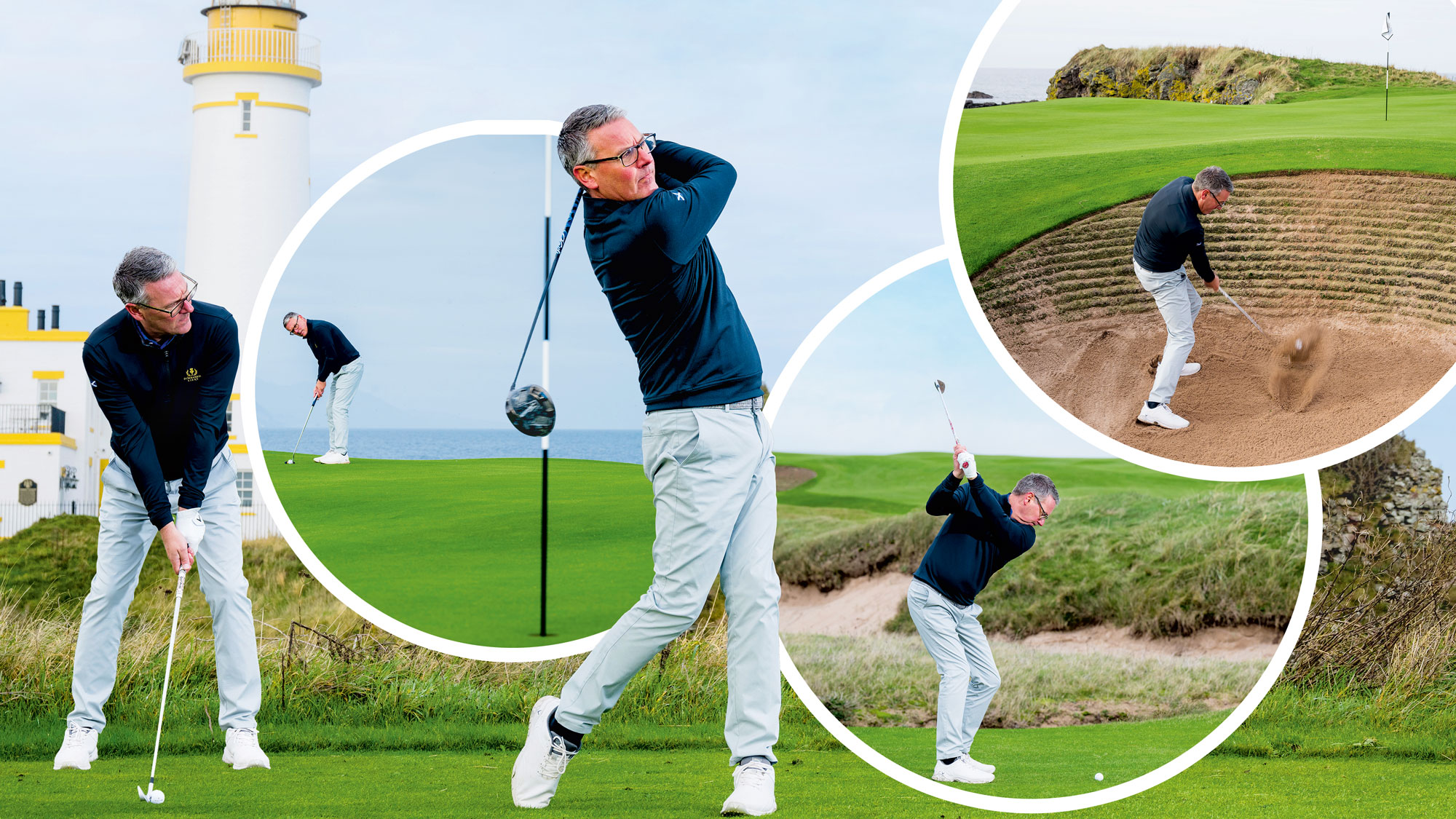 I Attended An Exclusive Tee To Green Masterclass With A Top Golf Coach... Now I'm Sharing His 6 Transformative Tips With You
I Attended An Exclusive Tee To Green Masterclass With A Top Golf Coach... Now I'm Sharing His 6 Transformative Tips With YouFew golfers get the chance to spend an entire day with a top golf coach, which is why I can't keep his six expert tips to myself. Get ready to play better golf!
By Barry Plummer
-
 5 Things The Biggest Hitters Do To Generate Power In Their Golf Swing (And How You Can Copy Them)
5 Things The Biggest Hitters Do To Generate Power In Their Golf Swing (And How You Can Copy Them)Generating more power is a great way to improve your handicap and shoot lower scores. So, we analysed the biggest hitters in golf to help you hit it further...
By Barry Plummer